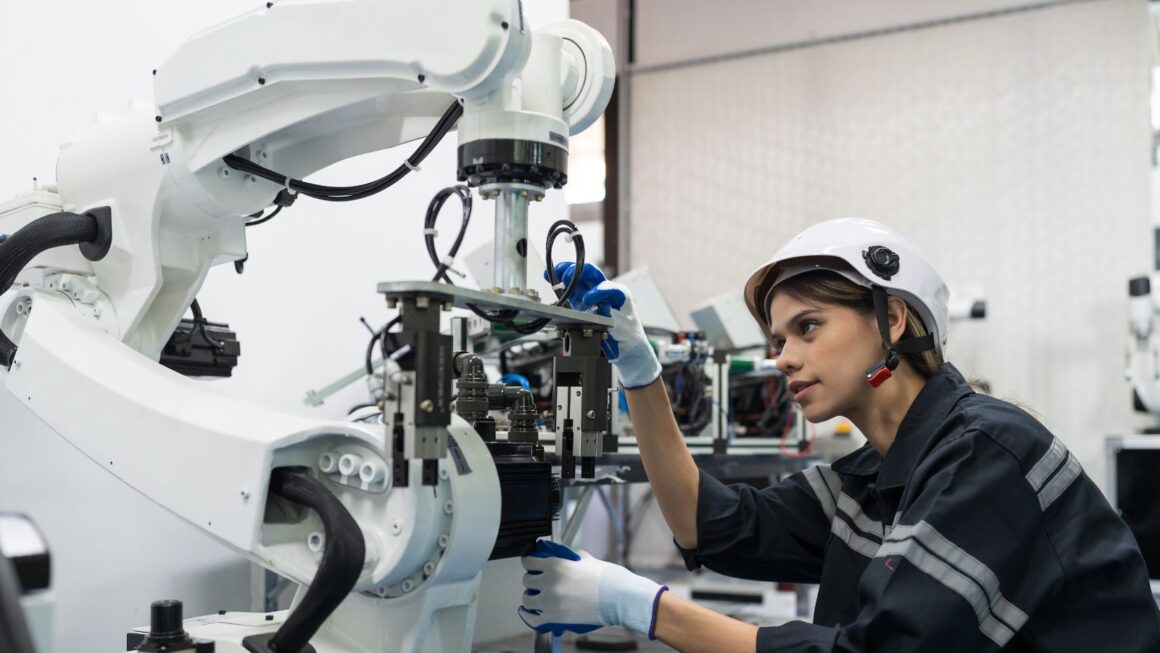The rapid evolution of technology has significantly transformed various industries, with the warehousing sector being a prominent example. One of the most impactful advancements is the integration of Autonomous Mobile Robots (AMRs) into modern warehousing operations. These robots have revolutionized logistics and supply chain management, enhancing efficiency, accuracy, and productivity. This article explores the integration of AMR robots in modern warehousing, discussing their benefits, applications, challenges, and future potential.
Table of Contents
ToggleEnhancing Operational Efficiency
The primary advantage of integrating AMR robots in warehouses is the substantial improvement in operational efficiency. Unlike traditional manual processes or static automation systems, AMRs can navigate dynamically within the warehouse environment. They utilize sophisticated sensors, cameras, and machine learning algorithms to map their surroundings and optimize their routes. This flexibility allows them to perform tasks such as picking, packing, and transporting goods with minimal human intervention.
The efficiency gains from AMRs are evident in reduced downtime and faster cycle times. For instance, during peak periods, AMRs can work continuously without breaks, ensuring that the warehouse operates at maximum capacity. Furthermore, they can be easily scaled up or down based on demand, providing a flexible solution to handle varying workloads.

Improving Accuracy and Reducing Errors
Another significant benefit of AMR integration is the enhancement of accuracy in warehouse operations. Human error is a common issue in traditional warehousing, leading to misplaced items, incorrect shipments, and inventory discrepancies. AMRs, equipped with advanced tracking and data collection systems, ensure precise execution of tasks. They can identify and transport the correct items to the appropriate locations, minimizing the risk of errors.
Moreover, AMRs contribute to better inventory management by providing real-time data on stock levels. This continuous monitoring allows for timely replenishment and accurate order fulfillment, ultimately improving customer satisfaction. The data collected by AMRs can also be analyzed to identify patterns and optimize inventory placement, further reducing the likelihood of errors.
Enhancing Workplace Safety
Workplace safety is a critical concern in warehousing, where accidents and injuries can have severe consequences. The integration of AMR robots significantly enhances safety by taking over hazardous tasks and reducing the need for human workers to engage in physically demanding or dangerous activities. For example, AMRs can handle heavy lifting, repetitive tasks, and operations in environments with extreme temperatures or toxic substances.
Additionally, AMRs are designed with safety features such as obstacle detection and collision avoidance. These capabilities ensure that the robots can navigate safely around the warehouse without posing risks to human workers. By reducing the potential for accidents and injuries, AMRs contribute to creating a safer and more productive work environment.
Cost Savings and Return on Investment
While the initial investment in AMR technology can be substantial, the long-term cost savings and return on investment (ROI) are significant. AMRs reduce labor costs by automating tasks that would otherwise require a substantial workforce. This reduction in labor dependency also helps mitigate the challenges of labor shortages, a common issue in the warehousing industry.
Moreover, AMRs enhance operational efficiency and accuracy, leading to lower operational costs and fewer losses due to errors. The scalability of AMR systems allows businesses to adjust their operations based on demand without incurring significant additional costs. Over time, these savings contribute to a favorable ROI, making the adoption of AMR technology a financially viable option for modern warehouses.
Challenges and Considerations
Despite the numerous benefits, integrating AMR robots in warehouses comes with its own set of challenges. One of the primary concerns is the initial cost of implementation, which includes purchasing the robots, setting up the necessary infrastructure, and training staff. Smaller warehouses with limited budgets may find it challenging to justify this investment.

Another consideration is the integration of AMRs with existing warehouse management systems (WMS). Ensuring seamless communication and coordination between AMRs and the WMS is crucial for optimal performance. This integration requires robust software solutions and can involve significant customization efforts.
Additionally, there are concerns about job displacement due to automation. While AMRs can take over repetitive and dangerous tasks, there is a need for reskilling and upskilling the workforce to manage and maintain the robotic systems. Addressing these challenges requires careful planning and a strategic approach to ensure a smooth transition to automated operations.
Conclusion
The integration of Autonomous Mobile Robots in modern warehousing represents a significant leap forward in logistics and supply chain management. A good example is Modula AMR robot integrations in warehousing operations, which exemplify cutting-edge automation, enhancing efficiency, accuracy, and flexibility in inventory management and order fulfilment. The benefits of enhanced operational efficiency, improved accuracy, increased workplace safety, and substantial cost savings make AMRs an attractive solution for warehouses looking to stay competitive in a rapidly evolving market. However, it is essential to address the challenges associated with implementation and ensure that the transition to automation is managed effectively.
As technology continues to advance, the capabilities of AMRs will only improve, offering even greater potential for optimization in warehouse operations. By embracing this technology, warehouses can achieve higher levels of productivity, accuracy, and safety, ultimately driving success in the dynamic landscape of modern logistics.



